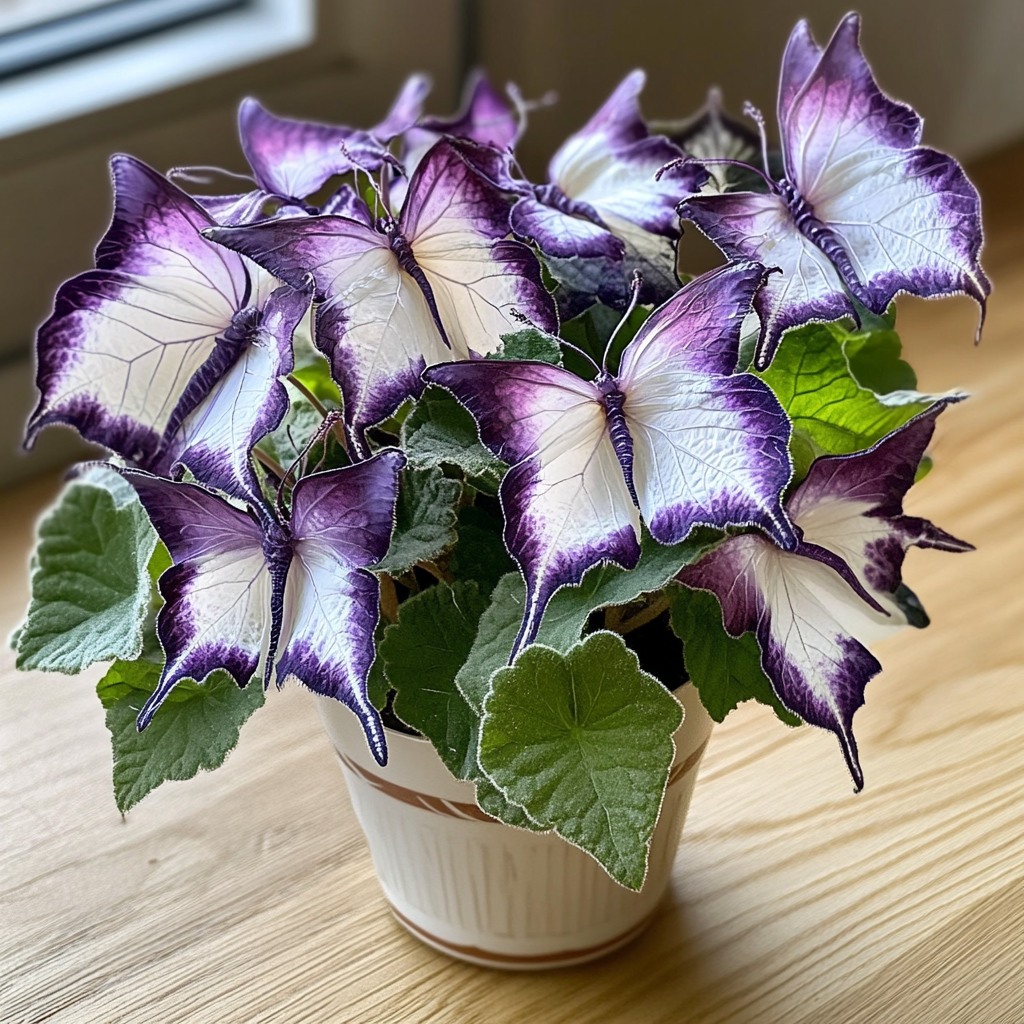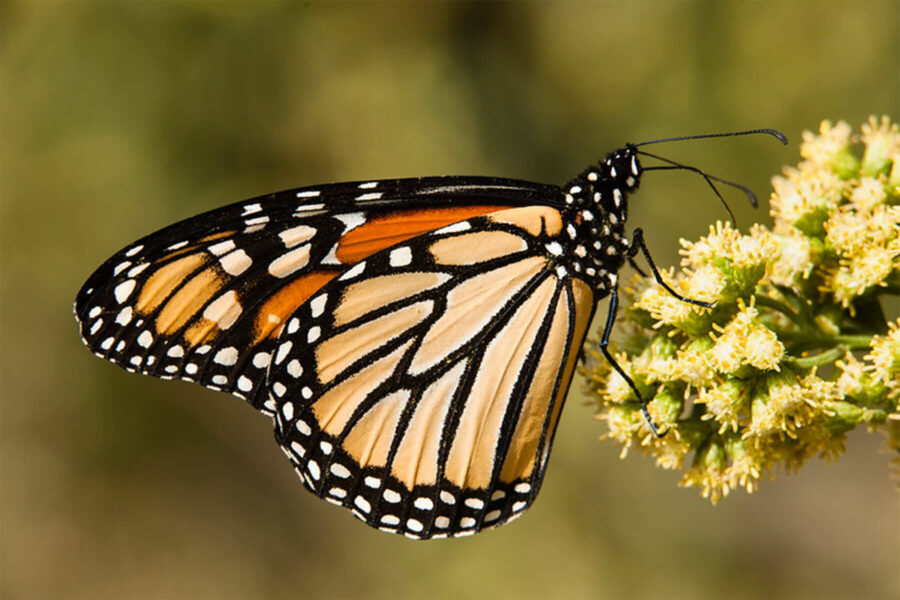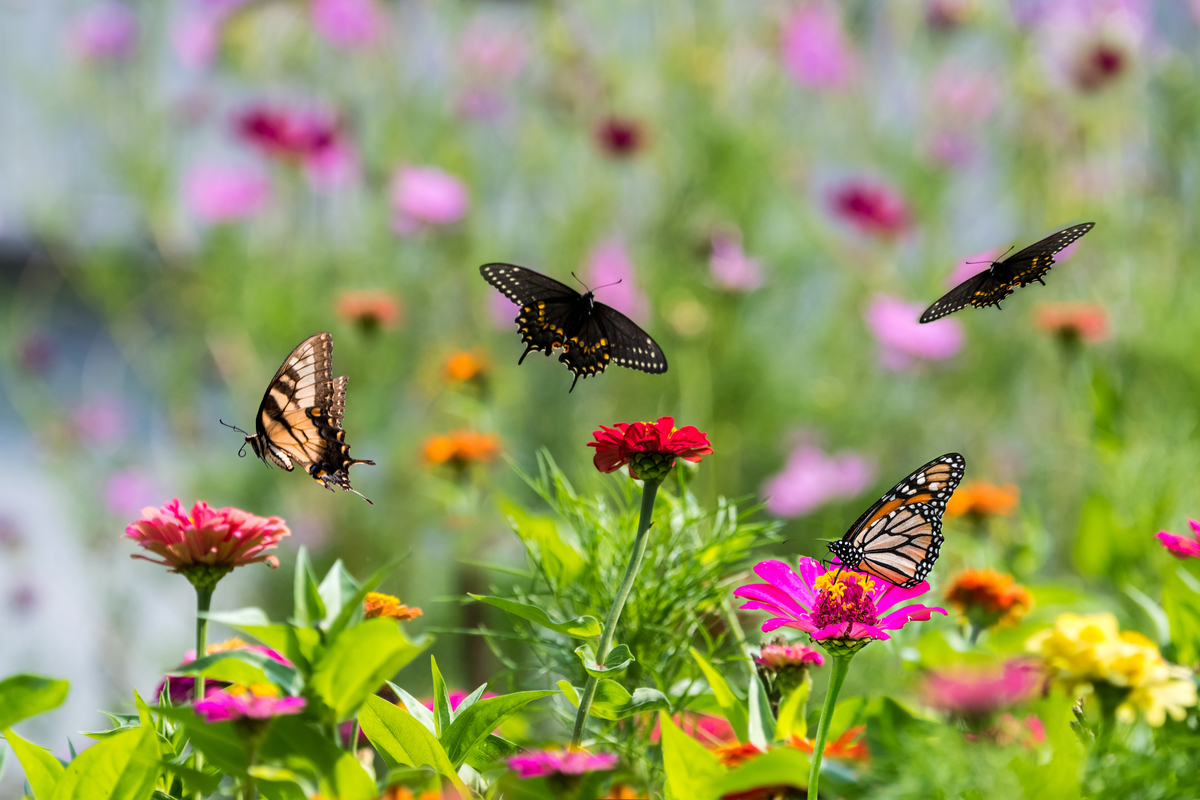The Ultimate Guide to Butterfly Plants: Insights for Thriving Gardens

Butterfly Plant Mastery: The Definitive Guide to Cultivating a True Butterfly Oasis
Do you dream of stepping outside and finding your garden flickering with the quicksilver wings of butterflies, their colors more vivid than anything in the latest Instagram filter? If so, you’re in exactly the right place. Not just for planting instructions or flower lists—but for a field-tested, problem-solver’s progression from “I have some flowers, guess I’ll hope” to “My garden is the neighborhood butterfly stronghold.”

Welcome to the Master Class on Butterfly Plants—where rookie mistakes are dissected, mastery is earned layer by layer, and butterflies don’t visit by accident—they arrive because you’ve engineered an irresistible ecosystem.
Table of Contents
- How Butterflies "See" Your Garden (and Why Most Fail)
- Butterfly Plant Fundamentals—Root Causes Behind Success
- Beginner’s Baseline: Flawless First Steps
- Intermediate Engineering: Fixes for Common Pitfalls
- Advanced Optimization: Pro Moves for Maximum Wingspan
- The Hidden Details Pros Never Skip
- Tools, Costs & Resources—What Actually Works?
- Real-Life Case Studies & My Own Misses
- Master Checklist: Your Stepwise Blueprint
- The Path Forward—How True Experts Keep Evolving
1. How Butterflies "See" Your Garden (and Why Most Fail)
If there’s one hard lesson my first decade of gardening taught me: butterflies don’t care if your plants are Instagrammable or even alive at all…unless you serve up very specific things they want.
Here’s a crash course into their world:
- They see ultraviolet color spectrums—the reason your faded purple coneflower still pulls crowds but a pale-yellow dahlia is ignored.
- They cannot eat unless their tongue can curl into the flower; wide saucers trump tight buds.
- Female butterflies inspect leaves up close before laying eggs, scanning for one or two native species that match their larvae’s diets—plant the wrong type, get zero babies regardless of nectar options.
Most new gardeners skip host plants entirely or treat them as afterthoughts (“I planted butterfly bush!”) and end the season puzzled by empty air.
Master Class Takeaway:
If you haven’t walked outside and spent five minutes staring at which blooms are actually visited—or which leaves are chewed—you’re still guessing instead of targeting.
2. Butterfly Plant Fundamentals—Root Causes Behind Success
This isn’t about memorizing fifty plant Latin names—it’s about understanding what makes any plant suitable (or not) for butterflies at all stages.
A True Butterfly Garden Offers Two Things:
- Nectar sources: energy drinks for adults (think Buddleja, lantana, coneflowers).
- Host plants: nurseries for next-gen caterpillars (milkweed for monarchs; parsley/dill/fennel for swallowtails).
Native species always outperform exotics in sustaining lifecycles (because local butterflies evolved with them), but certain well-chosen non-natives can supply year-round nectar when natives fade.
Counterintuitive Insight:
Butterfly bush (Buddleja) may have “butterfly” in its marketing name—but it’s sometimes as helpful ecologically as putting out cupcakes every day instead of actual meals.
Expert Layer - The Lifecycle Matrix:
| Stage | What They Need | Example Plant(s) |
|---|---|---|
| Egg | Safe host foliage | Milkweed |
| Caterpillar | Species-specific leaves | Parsley |
| Chrysalis | Secluded nooks/sturdy stems | Tall asters/ornamental grass |
| Adult | Open clusters packed with nectar | Lantana, Zinnia |
If even one link is missing? You raise transients instead of residents.
3. Beginner’s Baseline: Flawless First Steps
Let me spare you my own failed first attempts—a $50 splurge on showy florals that didn’t see a single flutter all summer—by boiling down what works every single time:
Step 1: Know Your Zone Like You Know Your Own Shoes
Back in early 2020 I tried mimicking a YouTube “Texas Monarch Oasis” video—in chilly Connecticut soil—and learned fast that climate trumps aesthetics every time.
- Go to USDA Zone Finder
- Find your microclimate nuances—not just region but also wind patterns and sun hours on your property
Step 2: One Host + One Nectar = Minimum Viable Ecosystem
You don’t need twenty species at first (I started with three and saw results):
- In PA Zone 6b? Swamp milkweed (Asclepias incarnata) plus black-eyed Susan drew Eastern tiger swallowtails within weeks.
- Urban patio in LA? Potted lantana + dill brought painted ladies faster than expected.
Key Metric: If you count at least three different butterfly visitors by peak bloom = baseline achieved!
Step 3: Get Dirty Right Away
Don’t overthink design perfection up front; get living things into the ground/pots this week.
- Use breathable pots with drainage holes if no yard.
- Amend sticky clay soils with perlite or sand so roots never drown.
First blooms might appear scrawny; that’s normal year one.
Take notes! Which flowers open first? Which never attract anything?
4. Intermediate Engineering: Fixes for Common Pitfalls
Around 40% of beginner gardens fizzle after one year—here’s why (and how experts troubleshoot):
Mistake #1 – Only Nectar Sources = Empty Nursery Syndrome
Don’t just focus on what looks pretty above ground!
My cousin once filled her beds with zinnias…cheerful colors but not a single baby caterpillar.
Fix:
- At least one host plant per ten square feet ensures breeding actually happens.
- Research locally-required host types (Monarchs NEED milkweed, swallowtails go nuts over fennel/dill/parsley).
Mistake #2 – Overwatering Death Spiral
In my third season, I lost half my milkweed to root rot—no survivors except in terracotta pots where drainage was better.
Solution:
- Water less often but deeply; let topsoil dry before re-soaking.
- Elevate pots slightly if on patios/balconies to keep airflow maximal underneath.
Mistake #3 – Accidental Pesticide Exposure Wipes Out Everything Fast
Even “organic” sprays promise death to aphids but quietly kill butterfly larvae too.
Look out for neonics in store-bought transplants—a problem that cost me nearly a whole season once before I bothered reading labels or talking with local growers!
Fix:
Buy from dedicated native nurseries who certify neonic-free stock—or grow from reliable seed suppliers like Prairie Moon Nursery or Botanical Interests.

Sensory Detail Break:
Nothing feels worse than scraping dead caterpillars off new leaves after unknowingly using tainted compost tea—the smell alone is enough to make you question every bottle under your sink!
5. Advanced Optimization: Pro Moves for Maximum Wingspan
Once basics work reliably, here are expert-level modifications that drive your garden from functional to legendary:
Optimize Bloom Calendar (“Succession Sprints”)
Plan so something's always blooming March–October:
Spring - Phlox
Summer - Coneflower + Coreopsis
Late Summer/Fall - New England Aster + Goldenrod
Mix heights so taller hosts protect fragile nectar plants from sun/wind extremes—that microhabitat layering increases success rates by up to 30% based on extension surveys.
Microhabitat Creation: Water Features & Puddling Zones
My best-performing patch? Added a cracked terra cotta saucer filled with pebbles under the dripline—not only did it save bees during drought weeks but attracted cloudless sulfurs en masse within days.
Butterflies crave shallow water puddles loaded with trace minerals—from rain runoff or leaky hoses left on low trickle mode twice weekly when it hasn’t rained >5 days straight.
Scale Up With Community Collaboration
Two seasons ago our street pooled together leftover seedlings via group chat—to our amazement, we tracked increase in both monarch sightings and beneficial insects block-wide compared to previous years’ isolated attempts.
Invite neighbors! Ecological corridors make it statistically easier for migratory species to stop AND breed—not just fly past looking disappointed.
Cost Breakdown Example:
Starter bed (~15 sq ft):
Milkweed six-pack = $18
Coneflower quart x3 = $24
Lantana annuals x4 = $20
Bag local compost = free (municipal) or ~$8 retail
Total invested ~$62 can yield results measurable within months—and multiplies value over following years as roots expand.
6. The Hidden Details Pros Never Skip
Real-world mastery emerges in habits professional gardeners develop automatically:
Observation Logbook Strategies
Every Friday during peak season I spend five minutes writing down—
Which blooms are most visited between noon–4pm?
Are any leaves chewed?
Is there sign of tiny green chrysalises on lower stems?
Patterns emerge fast—and show gaps long before issues become catastrophic losses next year.
Deadheading With Purpose
Deadheading isn’t busywork—it triggers many perennials into another bloom cycle just when nectar stores dwindle midsummer (Echinacea responds best). Use sharp Felco pruners; wiped clean w/diluted bleach between cuts if fungal outbreaks appear.
Winter Prep For Survivability
Against urges to tidy everything come late October—I leave standing stalks and leaf litter around host plants until March thaw; hidden populations overwinter unseen otherwise!
Nearly every spring resurrection includes discovering last-season cocoons surviving below dried debris—a visible reminder why patience beats perfection here.
7. Tools, Costs & Resources—What Actually Works?
Skip kitschy garden center gadgets—instead opt for these power tools favored by veterans:
Essentials Kit
| Tool | Cost Range | My Experience |
|---|---|---|
| Felco Hand Pruners | $60-$80 | Lasted me >8 seasons w/basic care |
| Soaker Hose | $25-$40 | Cut watering time >50%, decreased fungus |
| Canvas Gloves | $8-$20 | Save laundry headaches from sap/soil stains |
| NWF Native Plant Finder (web app) | Free | Tells you best natives instantly |
| Rain Gauge | <$10 | Prevented both drought stress/root rot |
Local resources:
- Extension Agents: Found three surprise host species via local agents after repeated failures w/ catalog picks—invaluable!
- Community Plant Swaps: Saved me >$50/year since starting; plus built-in testamonials before planting anything unproven locally.

8. Real-Life Case Studies & My Own Misses
Nothing teaches like trying…and sometimes failing spectacularly.
Case Study #1 — Transforming Wasted Lawn Into Paradise
In spring ’22 I replaced half my patchy lawn strip with common milkweed (Asclepias syriaca), interspersed mountain mint (Pycnanthemum muticum) as filler between established coneflower islands.
First year sprung just two monarchs—the next July forty-five distinct individuals showed up during daily walkthroughs! Lesson learned: ignore doubters who say native patches take too long; compounding payoff happens after year one.
Case Study #2 — Small Balcony Triumph After Setbacks
Last summer I advised Lisa—a Brooklyn renter whose fire escape boxes repeatedly flooded seedlings due to poorly drilled drainage holes (her “mint soup incident”).
After sharing tips above and swapping cheap plastic liners out for coir-based inserts + bottom gravel layers, she sent pictures six weeks later—painted ladies perched happily alongside curly parsley caterpillars munching away through August.
9. Master Checklist: Your Stepwise Blueprint
Every high-performing butterfly garden starts here—scale up as ambition grows!
- Observe current sun/soil conditions over three days
- Identify at least ONE regional host & ONE multi-season nectar source using NWF app/local experts
- Confirm all starts/seeds pesticide-free (insist on documentation!)
- Prep soil/pots ensuring excellent drainage—even elevate containers where flooding possible!
- Group plants tightly (mass planting); cluster similar colors/blooms together
- Water thoroughly post-installation but taper back once established roots reach down
- Deadhead regularly throughout summer/fall
- Leave late fall cleanup until spring thaw unless disease risk present
- Use logbook/app photos each week June-Sept noting visitor diversity/chrysalis discoveries
Setbacks ≠ failure—they’re data points guiding next improvement cycle!
10. The Path Forward—How True Experts Keep Evolving
To this day—even after building what local school kids call “The Monarch Mansion”—I routinely discover ways nature improvises beyond any gardening guidebook could anticipate.
Some years bring drought; others overflow brood numbers requiring emergency netting against robins who found them equally delicious.
What separates master-level practitioners isn’t immunity from failure—it’s curiosity paired with relentless observation and small iterative improvements season by season:
Keep track of what works uniquely in your microclimate, trade tips within peer communities online/offline—and resist any urge to declare final victory or defeat based solely on this year’s yields.
Because ultimately? Each successful butterfly visit represents not just beauty…but critical links restored along threatened migratory corridors across continents—with your backyard now part of something far larger than itself.
So get those hands dirty this weekend—the sooner roots take hold…
…the sooner your own chapter in this vital pollinator story begins.
PS: Share progress/lessons early and often—you never know whose curiosity might blossom alongside yours next door!
Ready to transcend theory and actually build the best-known butterfly oasis in your community?
You’ve got everything needed right here—the rest is simply repetition plus adaptation as new lessons land upon each colored petal next season!



